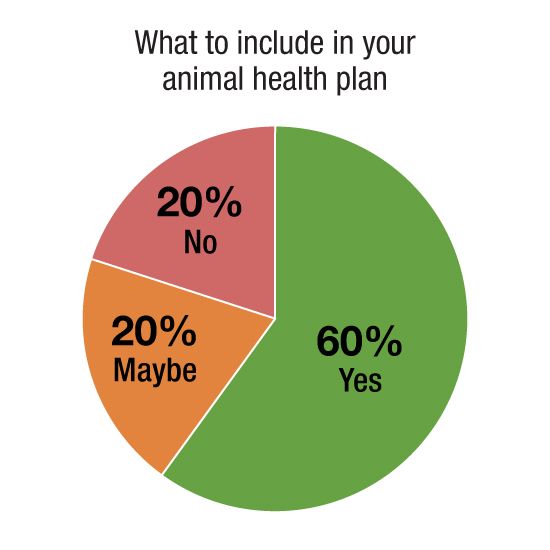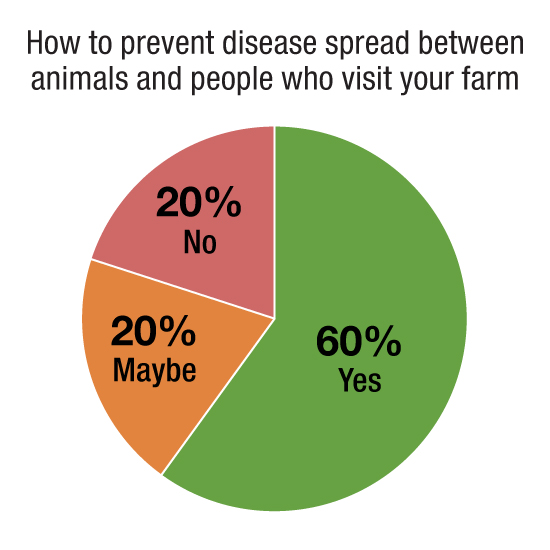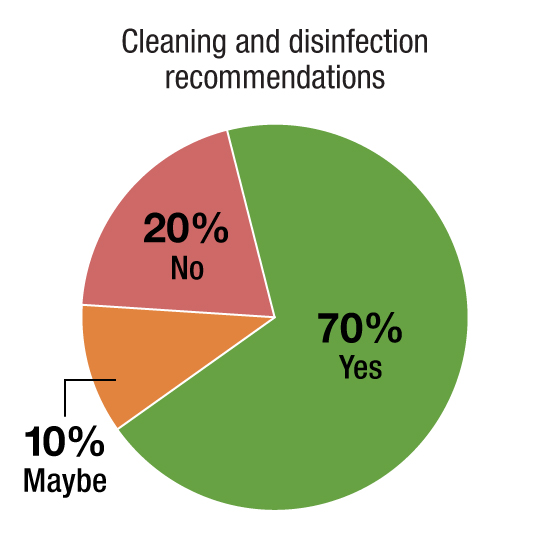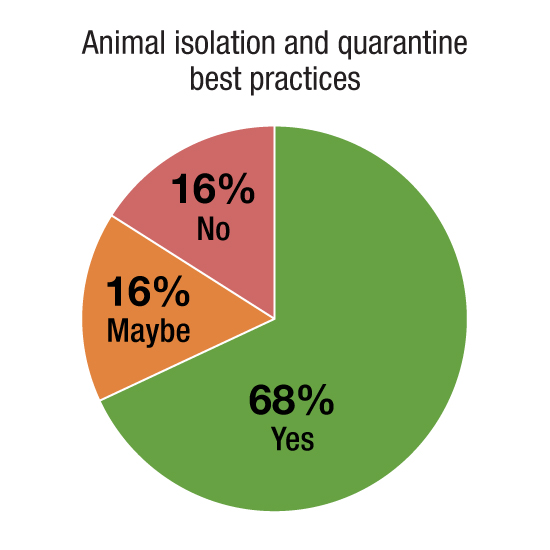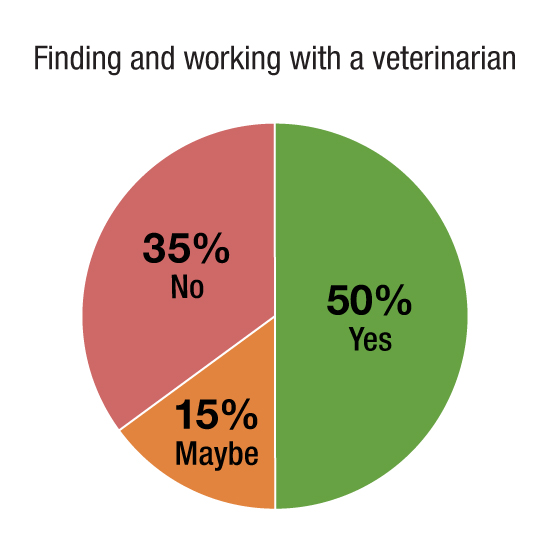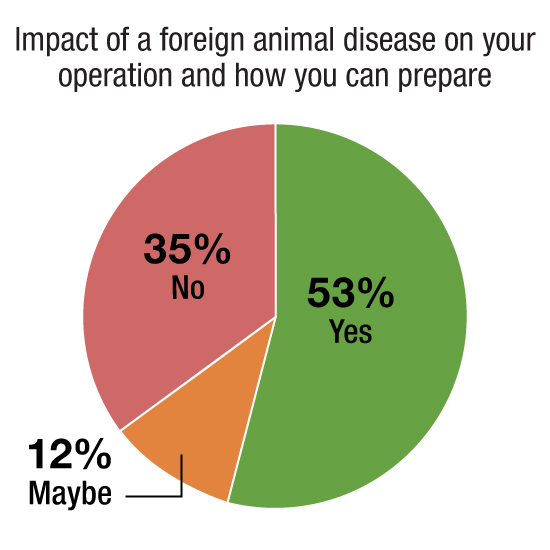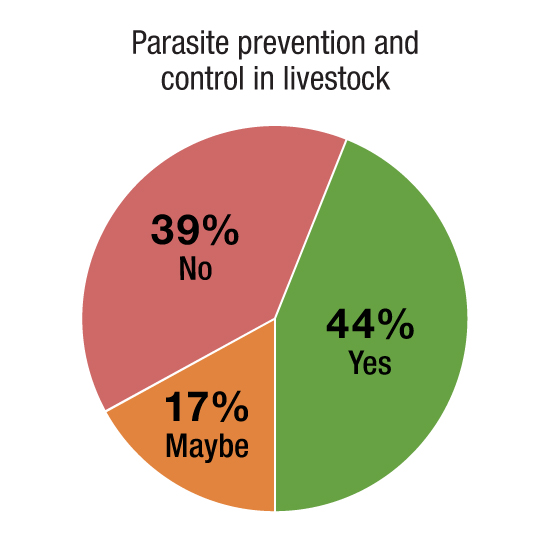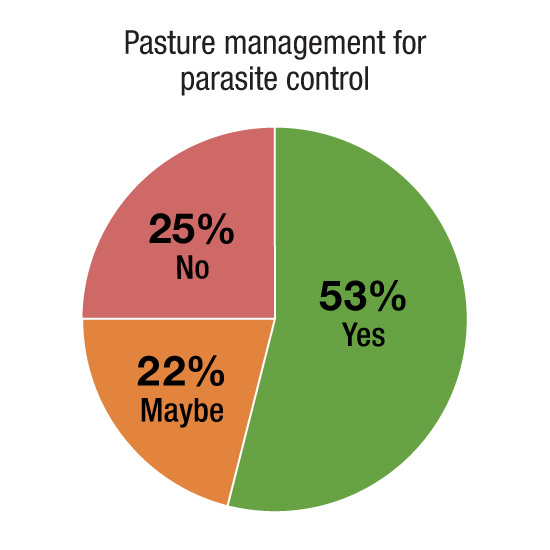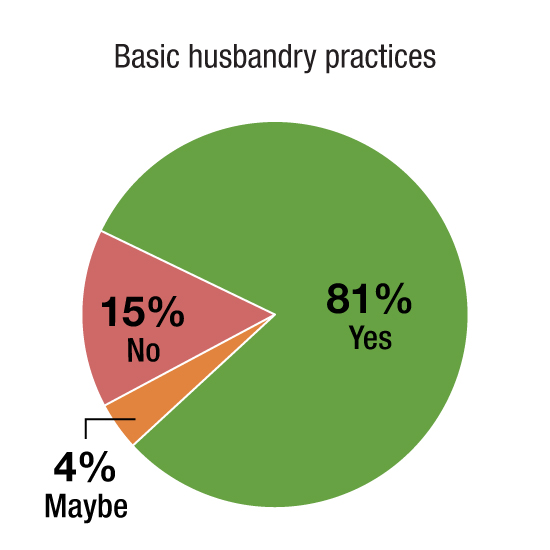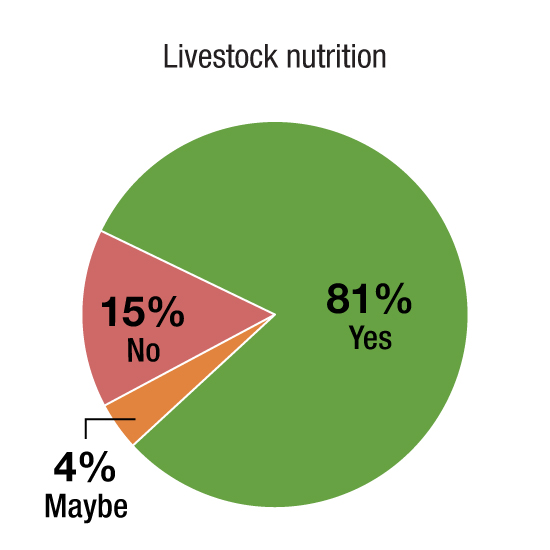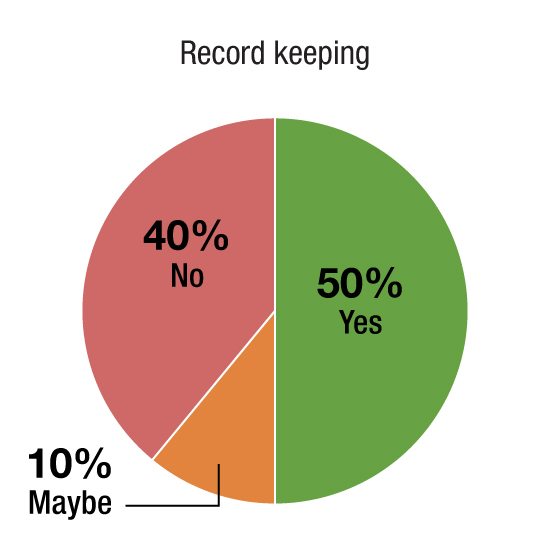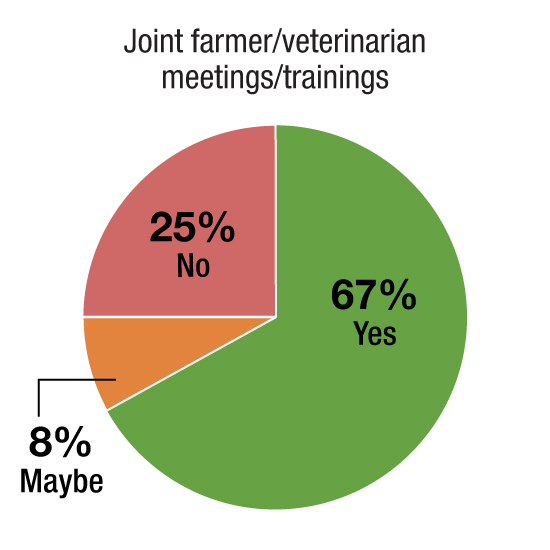3 Current practices and 2021 survey results
Disease prevention as currently practiced by O/A farmers and ranchers
A national study was conducted by The Livestock Project in with O/A producers to determine what they knew and practiced regarding biosecurity and disease prevention on their farms (Steneroden, 2021).The survey was conducted in the summer of 2021. There were 158 responses, well distributed throughout the US. 32% were certified organic, and the remainder practiced some kind of alternative livestock keeping. The study did not show surprising results. Similar results would likely be found when surveying conventional livestock farms. For example, biosecurity is rarely at the top of anyone’s list, some practices are embraced, and others are put on the back burner.
Some results from disease prevention-related questions are provided below.
Table 1: Practices related to disease prevention on organic/alternative operations practice, from ISU Survey 2021
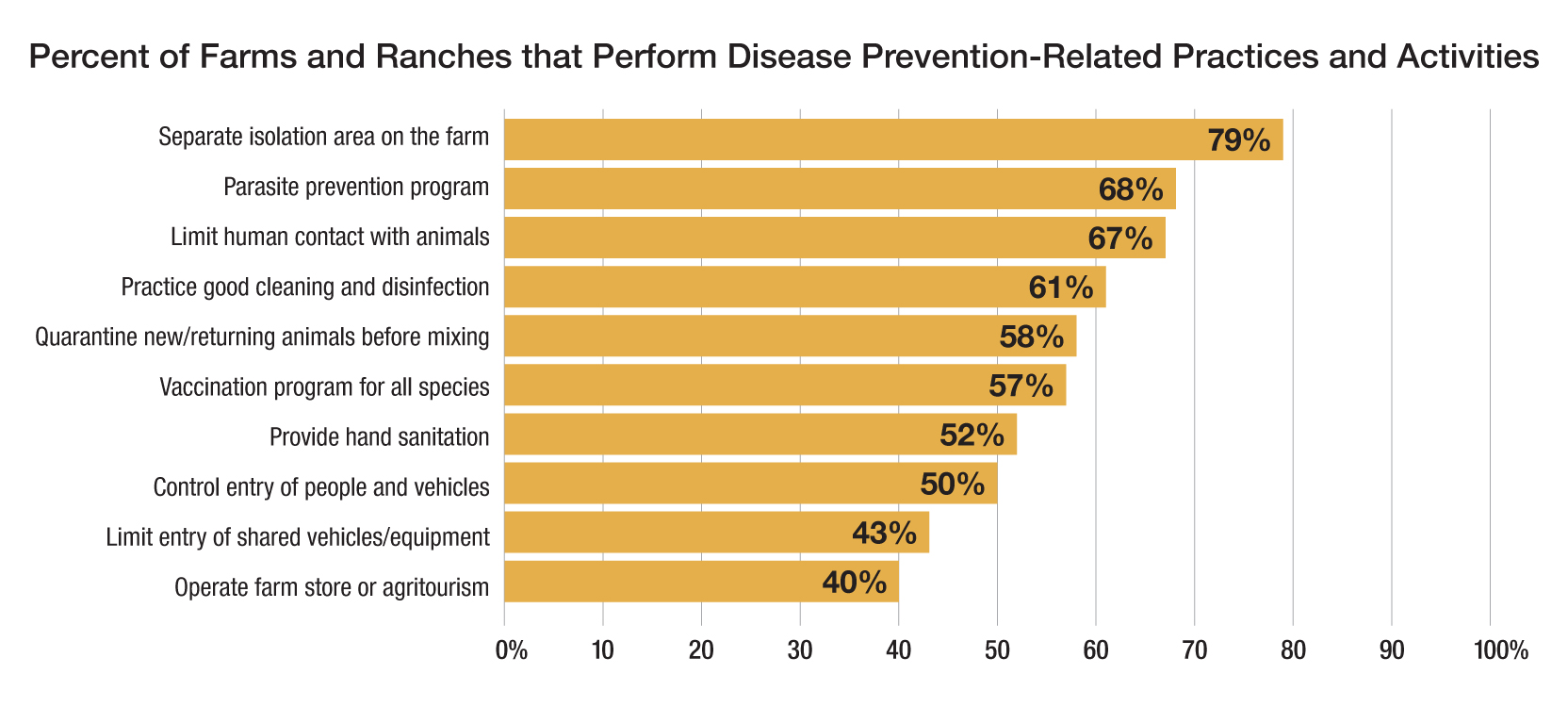
Table 1. provides results from the 2021 Iowa State University survey on ten basic disease prevention practices and their use on organic and alternative farms. Almost 80 percent surveyed have a separate isolation area on their farms; 68 percent have a parasite prevention program, and 67 percent limit animal contact. Sixty-one percent practice good cleaning and disinfection, and 58 percent separate new or returning animals before mixing them with the rest of the herd. Fifty-seven percent have a vaccination program for all species, 52 percent provide hand sanitation, and half of the respondents control people and vehicle entry into their operations. Forty-three percent limit shared vehicles and equipment entry, and 40 percent operate a farm store or conduct agritourism on their farms.
These results represent a small percentage of all the small O/A farms in the US, and as we know, conditions vary greatly between farms, regions, and types. These results are a starting point and a table to think about questions to ask when meeting with consulting with O/A operations. These questions and more are included in the Step 2 checklist.
Survey results also revealed that O/A farmers requested and could benefit from materials focused on their specific type of operation (i.e., organic or alternative vs. conventional). Some of these suggested materials have been developed by The Livestock Project to address biosecurity/disease prevention on O/A farms and are included with these materials (Step 1: Movement Risks, Step 2: Disease Prevention Checklist, Step 3: Disease Prevention Plan template). While not vastly different from what others have prepared for conventional small farms, these materials are sensitive to the differences between conventional and O/A farmers and ranchers’ needs, goals, and philosophies and are targeted directly to some of the unique concerns of O/A farmers/ranchers. You will find links to them below.
These O/A-focused disease prevention tools/information include information on everyday biosecurity aimed at O/A farmers, disease outbreaks, reportable and foreign animal diseases (FAD), guiding organic and alternative farmers/ranchers during a FAD emergency, and the role of veterinarians on O/A farms as advisors on these disease prevention topics. The tools can be accessed on the The Livestock Project resources page.
Table 2: Results from the 2021 Survey of O/A farmers/ranchers on materials they would find useful or relevant to their operations. Response choices were Yes, No, or I don’t know. The I don’t know results are included here, indicating that producers may benefit from having greater knowledge of these materials.
